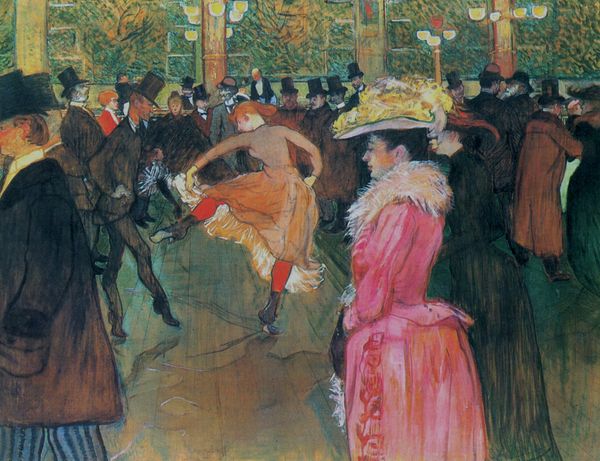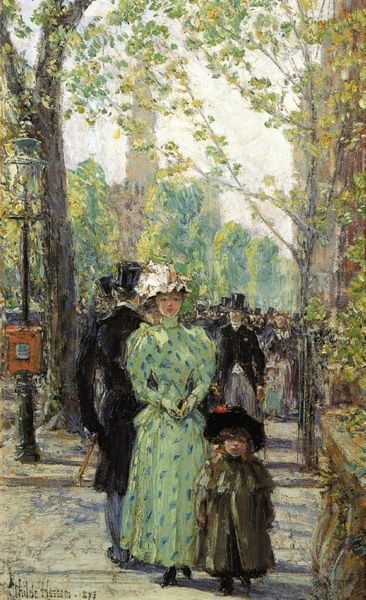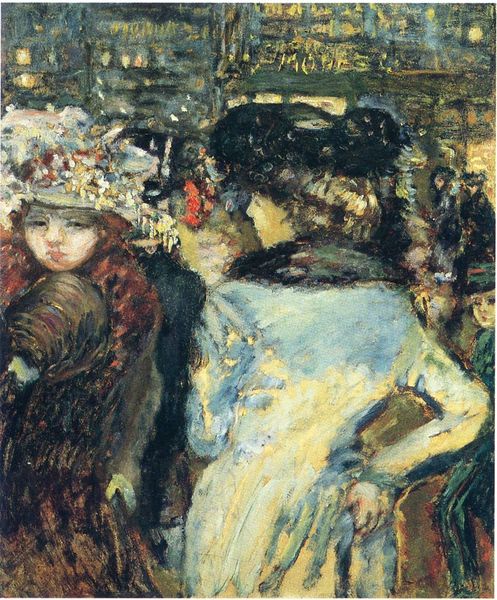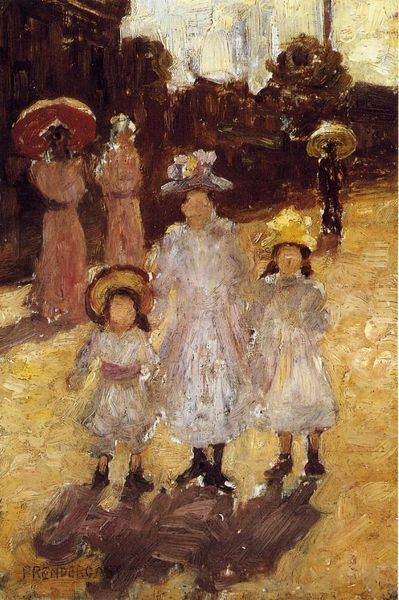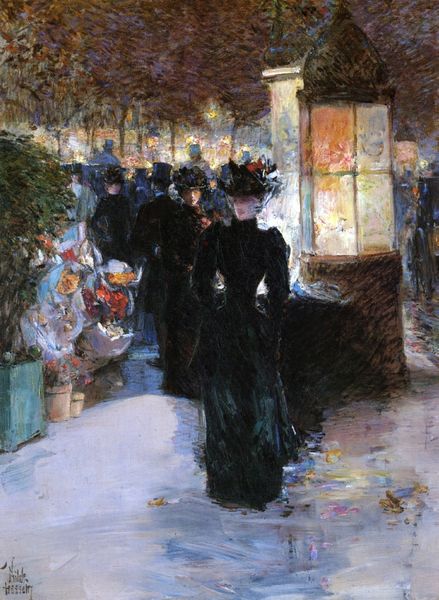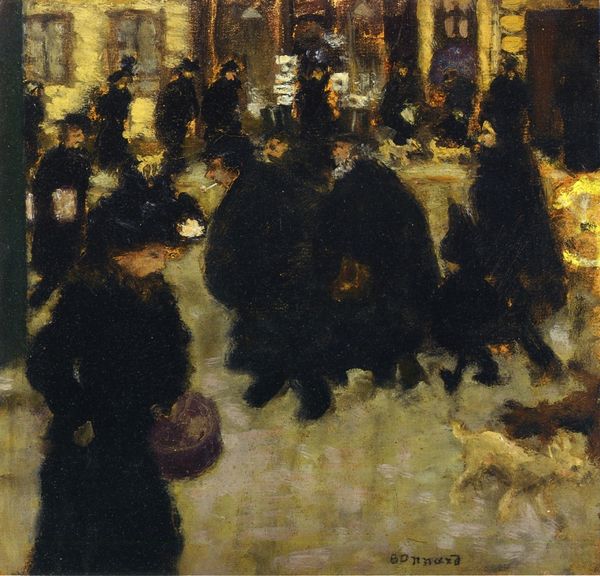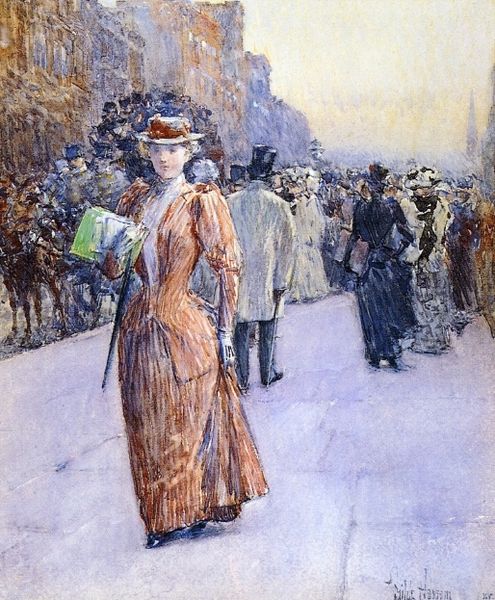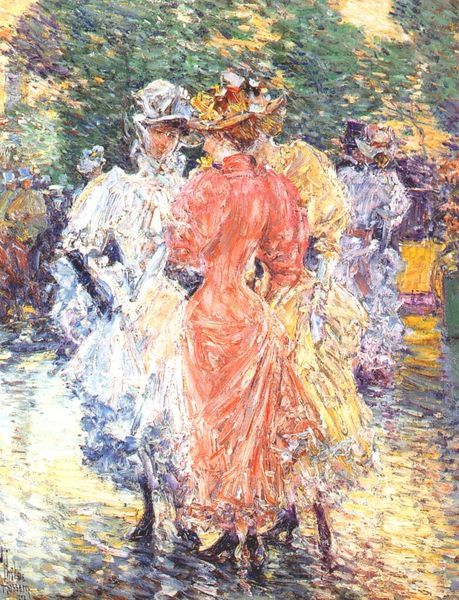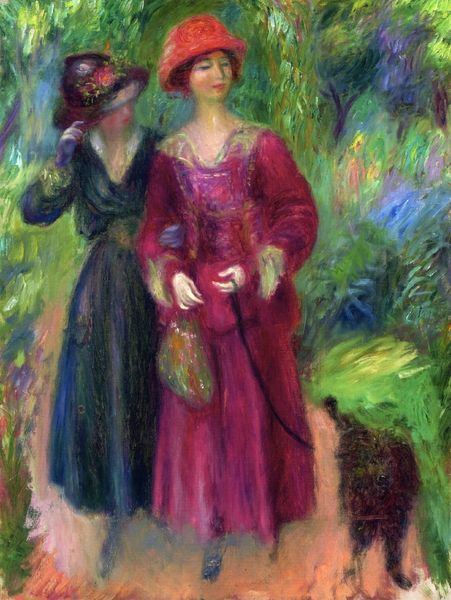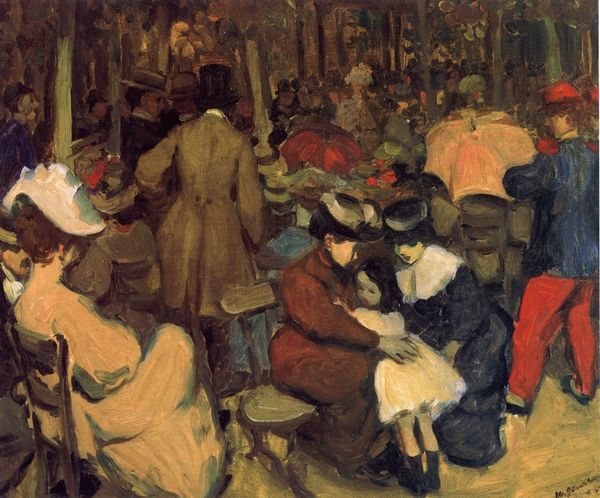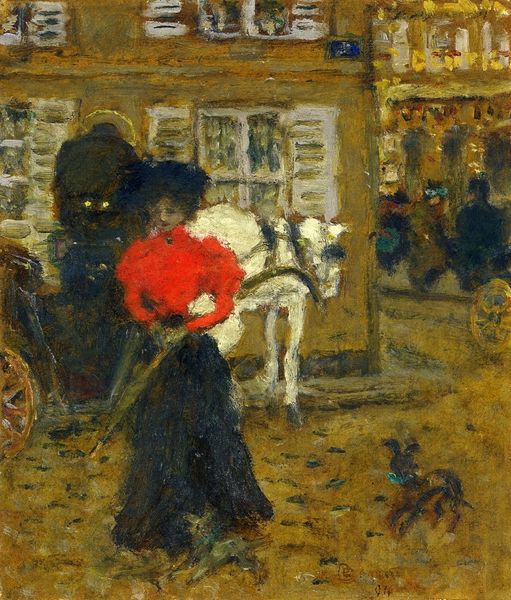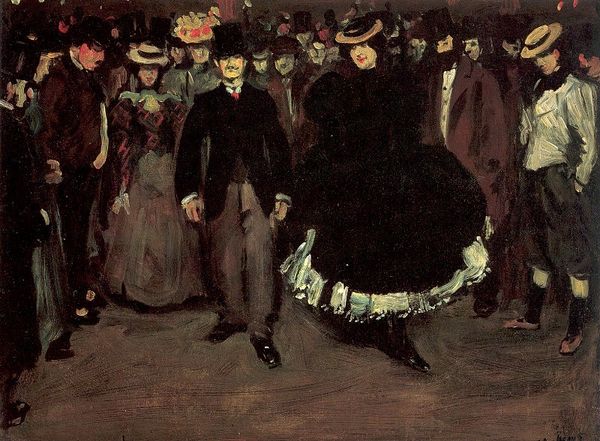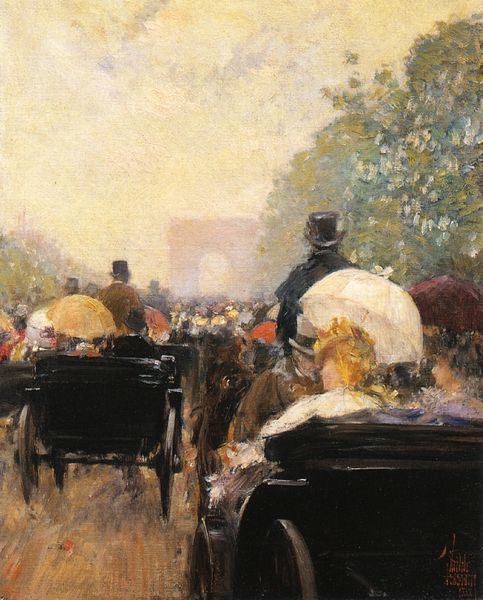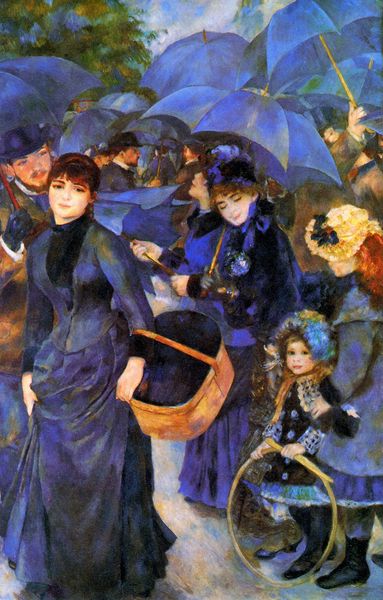
Copyright: Public domain
Curator: Let’s discuss William Glackens's 1914 painting, "Girl Roller-Skating, Washington Square." The oil-on-canvas work depicts a young girl on roller skates in Washington Square Park. Editor: My first impression is that there is a wonderfully naive optimism at play, like the world is painted with big, happy brushstrokes. The slightly awkward figure in a bright yellow coat creates an air of whimsical delight. Curator: It does seem a celebration of everyday life, particularly the lives of women and children. Glackens was part of the Ashcan School, after all. He depicted ordinary urban scenes, capturing the energy and dynamism of New York City in the early 20th century. The girl's freedom and playfulness are at the core of what he is presenting. Editor: Agreed. The loose brushwork, a hallmark of Impressionism, emphasizes a certain freedom, but also reminds us of the labor involved. Each stroke carries a decision, each dab of paint is applied using hard-won skill and physical effort to present something that looks carefree but in fact has very deliberate means. What do you think about the manufacturing element here? The skates themselves are an industrial product becoming more accessible to a broader range of society and leisure pursuits, now readily taken up by youth, such as this girl? Curator: Yes, roller skates themselves have quite a complex socio-historical meaning. As technologies of play and recreation, roller skates speak to expanding economic opportunity, shifting gender dynamics, and a youth culture finding new means of individual expression and empowerment. The yellow coat and blue hat, signaling middle-class aspirations and self-expression, all work together to reveal an underlying sense of freedom during an important transitional time. Editor: Absolutely, considering this within a history of materials is an exercise in looking at societal shifts from another angle. And ultimately, like all painting, there is an environmental component. I am left thinking of how that paint was made. What do we know about its contents, its manufacture, or where the pigment originated? That is just as important as any kind of representation. Curator: These layered insights encourage us to think more deeply about not only the painting, but also the moment of the painting, as well as our moment. I can walk away pondering this representation and materiality far beyond a simple moment. Editor: Me too. By understanding materiality and production, we come closer to unraveling not just the how of this artwork, but, the what as well.
Comments
No comments
Be the first to comment and join the conversation on the ultimate creative platform.
